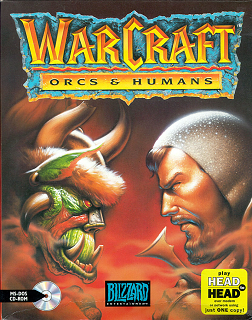
Warcraft: Orcs & Humans is a real-time strategy game (RTS) developed and published by Blizzard Entertainment, and published by Interplay Productions in Europe. It was released for MS-DOS in North America on 15 November 1994, and for Mac OS in early 1996. The MS-DOS version was re-released by Sold-Out Software in 2002.
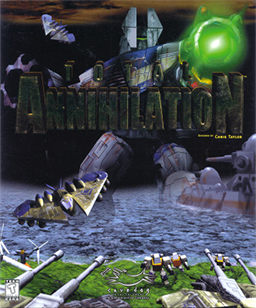
Total Annihilation is a science fiction real-time strategy video game released in September 1997 for Microsoft Windows and Mac OS by Cavedog Entertainment and distributed internationally by GT Interactive. Two expansion packs were released in 1998, The Core Contingency on April 29 and Battle Tactics on July 20, while a medieval-themed spin-off called Total Annihilation: Kingdoms was released on June 25, 1999.

Age of Wonders is a 1999 turn-based strategy game co-developed by Triumph Studios and Epic MegaGames, and published by Gathering of Developers.

Dungeon Keeper 2 is a strategy game developed by Bullfrog Productions and published by Electronic Arts in 1999 for Microsoft Windows. In the sequel to Dungeon Keeper, the player takes the role of a 'dungeon keeper', building and defending an underground dungeon from the would-be heroes that would invade it, as well as from other keepers. In the campaign mode, the player is charged with recovering the portal gems from each area in order to open a portal to the surface. The player can also construct a dungeon without strict objectives, and multiplayer is supported over a network.
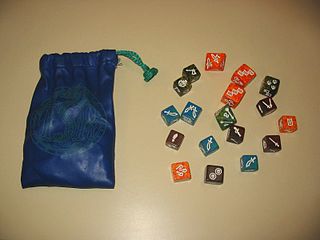
Dragon Dice is a collectible dice game originally made by TSR, Inc., and is produced today by SFR, Inc. It is one of only a handful of collectible dice games produced in the early 1990s. The races and monsters in Dragon Dice were created by Lester Smith and include some creatures unique to a fantasy setting and others familiar to the Dungeons & Dragons role-playing game.

Heroes of Might and Magic IV is a turn-based strategy game developed by Gus Smedstad through New World Computing and published by the 3DO Company for Microsoft Windows-based personal computers in 2002. A Macintosh port was subsequently developed by Contraband Entertainment and released by the 3DO Company. The fourth installment of the popular Heroes of Might and Magic franchise, it is the sequel to Heroes of Might and Magic III, and was the last to be developed by New World Computing.

Pacific General is a computer wargame depicting famous battles of the World War II Pacific campaigns. It was published by Strategic Simulations in 1997 using the same game engine of the earlier and successful Panzer General for Windows 95. It was re-released on GOG.com in May 2015.

Battle Realms is a real-time strategy video game published and released by Crave Entertainment and Ubi Soft in November 2001. It was the first game created by Liquid Entertainment. An expansion pack Battle Realms: Winter of the Wolf was released in November 2002. In 2012, the game was re-released on GOG.com. In 2019, the game was re-released on Steam as Battle Realms: Zen Edition, in its early access state with functioning online multiplayer.

Disciples II: Dark Prophecy is a 2002 turn-based strategy game by Strategy First for Microsoft Windows. It is the sequel to the 1999 game Disciples: Sacred Lands, and has become significantly more successful in terms of both sales and popularity than its predecessor. A collector's edition version of the game was released, which included a card game based upon the story and five extra quests.

WarBreeds is a real-time strategy video game developed and published by Red Orb Entertainment and Broderbund. The game is set in a far off galaxy where the humanoid amphibian race called the Yedda have died out due to famine, disease and civil war, leaving their four former servitor races to fight for supremacy for their planet. WarBreeds features the ability to fully customise the warriors with many types of weapons which provide over 35,000 unique combinations. The central theme and mechanic of the game is genetic engineering.
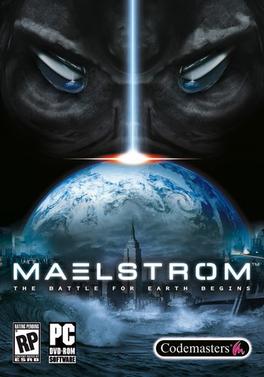
Maelstrom: The Battle for Earth Begins is a real-time strategy game developed by KD-Vision in Russia and published by Codemasters.
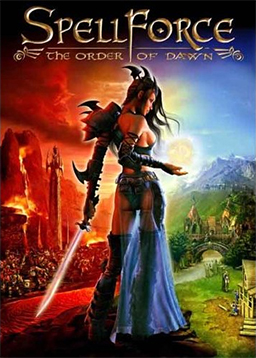
SpellForce: The Order of Dawn is a 2003 real-time strategy and role-playing video game, developed by Phenomic Game Development and published by Encore, Inc for Microsoft Windows. First released in Europe on November 11, 2003, the game takes place within a high-fantasy world in the years following a devastating cataclysmic event, with the game's main campaign focusing on the plight of an immortal warrior who seeks to investigate growing troubles amongst some of the islands that have formed.

SpellForce 2: Shadow Wars is a 2006 real-time strategy and role-playing video game, developed by Phenomic, published by JoWooD Productions, and released for Microsoft Windows in 2006. The game takes place after the events of 2003's SpellForce: The Order of Dawn, with players taking on the role of an immortal warrior known as "The Soulcarrier", who seeks aid to liberate his homeland from invaders, only to be drawn on a quest to defeat a powerful alchemist responsible for creating the immortality of the warrior and his people.

Tzar: The Burden of the Crown, also known as simply Tzar, is a real-time strategy game for Microsoft Windows published by TalonSoft and developed by the Bulgarian game developer company Haemimont Games. It received average reviews from critics.
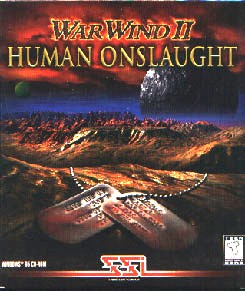
War Wind II: Human Onslaught is a real-time strategy computer game from developer DreamForge Intertainment that was published by Strategic Simulations, Inc. in 1997. It is the sequel to DreamForge's 1996 release War Wind.

Warhammer 40,000: Dawn of War – Dark Crusade is the second expansion to the real-time strategy video game Warhammer 40,000: Dawn of War developed by Relic Entertainment and published by THQ. Based on Games Workshop's tabletop wargame, Warhammer 40,000, Dark Crusade was released on October 9, 2006. The expansion features two new races, the Tau Empire and the Necrons. Including the Imperial Guard from Dawn of War's first expansion pack Winter Assault, a total of seven playable races in this expansion.

Bomberman Fantasy Race is a racing video game developed by GraphicResearch Inc., released for PlayStation in Japan by publisher Hudson Soft in 1998, in North America by Atlus USA in 1999, and in Europe by Virgin Interactive in 2000. It is a spin-off of the Bomberman series.
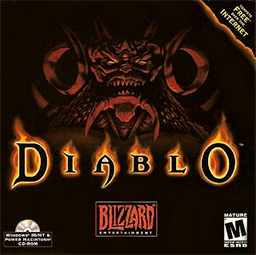
Diablo is an action role-playing video game developed by Blizzard North and released by Blizzard Entertainment in January 1997, and is the first installment in the video game series of the same name.

Warcraft II: Tides of Darkness is a fantasy real-time strategy computer game developed by Blizzard Entertainment and released for MS-DOS and Microsoft Windows in 1995 and Mac OS in 1996 by Blizzard's parent, Davidson & Associates. A sequel to Warcraft: Orcs & Humans, the game was met with positive reviews and won most of the major PC gaming awards in 1996. In 1996, Blizzard released an expansion pack, Warcraft II: Beyond the Dark Portal, for DOS and Mac OS, and a compilation, Warcraft II: The Dark Saga, for the PlayStation and Sega Saturn. The Battle.net edition, released in 1999, included Warcraft II: Beyond the Dark Portal, provided Blizzard's online gaming service, and replaced the MS-DOS version with a Windows one.

Land Air Sea Warfare is a real-time strategy game developed by Isotope 244. It is the sequel to Machines at War and the predecessor of Machines at War 3. LASW was released in 2010 for Microsoft Windows, Android, Mac OS X, iOS and Windows Mobile. It features gameplay similar to other RTS titles like Command & Conquer: Red Alert, Age of Empires, StarCraft, Warcraft, and Supreme Commander. The game was ported to Ouya in 2015.




















